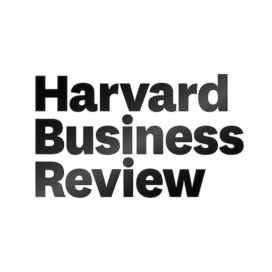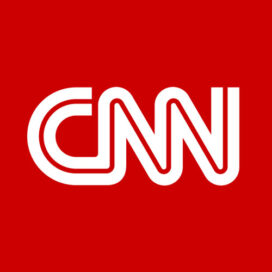‘Revolving Door’ Between Fed and Banks Spins Faster
Published: February 3, 2015 / Author: Matthew Boesler and Jeff Kearns

Shive
Mark Imhof joined the Federal Reserve Bank of New York as a bank examiner in September 2010 as it went on a hiring binge following the worst financial crisis in generations. Now a consultant, he helps companies navigate anti-money-laundering regulations.
Imhof, 43, is part of the latest rotation in what Fed critics call a “revolving door” between the regulator and the firms it oversees. It’s a spin that the central bank inadvertently greased by boosting supervisory staff by 46 percent between 2008 and 2013.
Regulators needed experienced professionals like Imhof, a certified public accountant, back then to help clean up the banking system and implement new regulations. By 2013, the extra staff wasn’t necessary and Imhof and some colleagues began to return to the private sector as banks and other financial services firms expanded their compliance departments.

Forster
The movement is likely to accelerate as private firms become the dominant source of employment growth for financial examiners. Industry headcount at financial firms is expected to rise 11 percent by 2022 from 2012 levels, while federal government employment of examiners will fall 3 percent, according to Bureau of Labor Statistics projections.
That’s likely to focus more attention on the potential for conflicts of interest, which prompted a Senate hearing late last year, and the rules governing the movement of employees between regulators and financial firms.
’Political Winds’
“I can see a lot of these people who came in during the crisis departing as the work settles down and we get back to normal,” said Ernest Patrikis, a former general counsel at the New York Fed who is now a partner at White & Case LLP in New York. The Fed shouldn’t “bend to political winds” that would make it harder for those examiners to take jobs in the private sector, he said.
Those winds were evident at a Nov. 21 Senate hearing prompted by allegations from Carmen Segarra, the former New York Fed examiner who said her colleagues were too deferential to Goldman Sachs Group Inc.
New York Fed President William C. Dudley, a former chief U.S. economist at Goldman Sachs, was also questioned by senators about a separate incident in September in which Rohit Bansal, a Goldman Sachs investment banker hired just months earlier from the New York Fed, had inappropriately obtained information from former Fed colleague Jason Gross. Both were fired and the New York Fed said it was working with law enforcement authorities.
‘Zero Tolerance’
At the hearing, Dudley testified that there is “zero tolerance” for those who don’t safeguard confidential information and said he thought the idea of a revolving door is exaggerated.
Senator Elizabeth Warren, a Massachusetts Democrat, disagreed. “We need to put a lock on the revolving door,” she said during the hearing. “We need to ensure that regulators aren’t captured by the big banks in exchange for the hope of future jobs.”
An outspoken advocate for more federal oversight of the financial services industry, Warren noted that regulatory agencies also hire from private industry.
“We can’t build a strong reliable bank oversight system so long as the revolving door keeps putting bank executives in the role of temporary cops,” she said. “We gotta worry about this revolving door both ways.”
Sean Casey, Bansal’s attorney, declined to comment. Bruce Barket, Gross’s attorney, said in an interview that he was hopeful his client would not be indicted. He called the incident “innocuous” and said the revolving door analogy was “strained” in this case.
Judgment Error
“That just isn’t what was going on here,” Barket said. His client “perhaps made an error in judgment, but it was an error of just kind of helping out his buddy who needed access to something that his buddy had a hand in creating. It wasn’t really done for profit or some kind of nefarious motive.”
In his testimony, Dudley said current restrictions prohibit anyone leaving the bank from lobbying it on matters they worked on. Departing supervisory staff are barred from any official contact for a year. Senior examiners also can’t work for an institution they supervised within a year of leaving their jobs.
For more junior examiners not subject to that restriction, “there’s a review made of their examination papers to make sure that there was no bias in terms of how they examined the banking institution,” Dudley said during the hearing. “A legitimate question is whether one should make these standards even higher, but there are a whole set of standards in place.”
Extend Ban
The ban should be more extensive, said David Beim, a former professor at Columbia University’s school of business in New York, who led an internal probe into the New York Fed’s supervisory practices in 2009. “The existing law is really unfortunately weak,” he said at the hearing. Examiners should not join any bank for three years after leaving their supervisory jobs, he said. “That would force an identity decision — am I banker or am I regulator — and keep people on one track or the other.”
Demand from banks for former examiners and executives with regulatory expertise is particularly strong now, said Jeanne Branthover, managing partner at Boyden Global Executive Search in New York. “We are seeing a big increase, which we have over the past two years” in demand for compliance personnel, she said.
In a 2014 study examining the career paths of more than 34,000 current and former regulators, New York Fed economists showed there was a revolving door, but not necessarily driven by the quid-pro-quo that critics are focused on. About 10 percent of bank regulators took jobs with banks in 2013, according to the study.
Harsh Enforcement
The report said examiners tend to take jobs in the private sector during periods when enforcement is relatively harsh instead of relatively easy.
“Regulators may have an incentive to favor excessively complex regulations or strict enforcement activity because the ’schooling’ in regulations enhances the expected future earnings of regulators, should they move to the private sector,” the authors, led by David Lucca, wrote.
Changes in bank examination have accelerated in recent decades as the industry has evolved. In the 1990s, an examiner working on the road would have arrived at a bank carrying regulatory books, poring over paper files. Examiners now are more likely to be called on to decipher electronic records of complex derivatives positions that are valued using mathematical models.
Higher Qualifications
Those joining regulatory agencies have higher qualifications than in the past and extensive training is required, said Tariq Mirza, a former Federal Deposit Insurance Corp. regional manager for supervision.
“More and more we see people with master’s degrees like MBAs,” said Mirza, who is now a national managing director for bank advisory and regulatory services at Grant Thornton LLP in Alexandria, Virginia. “It’s a pretty rigorous training curriculum.”
The financial crisis forced examiners to adapt while also requiring the Fed and other regulators to add staff.
“We have had to ramp up hiring very significantly and very quickly” since 2009, Julie Stackhouse, senior vice president for supervision at the St. Louis Fed, said in an interview. “We had to put more resources on” training the sizable class of newly-minted examiners, she added.
Growth in the New York Fed’s salary expenses averaged 8.6 percent per year between 2008 and 2012 before falling to 2.5 percent in 2013, according to financial statements in the reserve bank’s annual reports, underscoring how hiring accelerated in the first few years of the crisis and then slowed. Examiners at the 12 regional Fed banks numbered 3,860 in 2013, up from 2,657 in 2007.
Business Cycle
The movement of examiners between regulators and banks ebbs and flows with the business cycle. The study conducted by the New York Fed economists showed that banks increase hiring from agencies as the economy accelerates, whereas in contractions, the government draws from private industry. While regulators hired more workers away from the private sector in every year from 2008 to 2013 than vice versa, the trend seems poised to reverse.
That could be a good thing for the banking system, according to another recent study conducted by finance professors Sophie Shive and Margaret Forster at the University of Notre Dame in Indiana. They found hiring of former regulators generally led to a decrease in a firm’s stock-price volatility and, in the case of banks, an increase in asset quality.
The results may suggest “ex-regulators initiate or facilitate a policy of risk reduction at the firm that is influenced by their experience at the regulatory agency,” they wrote.
The revolving door argument “misses the point,” said Wayne Abernathy, executive vice president of financial institutions policy and regulatory affairs at the American Bankers Association in Washington.
“It’s often irrelevant where the person came from,” he said. For both government and private-sector hiring managers, the question is, “who knows this stuff the best?”
Read this story on the Bloomberg Business website.
Related Stories




